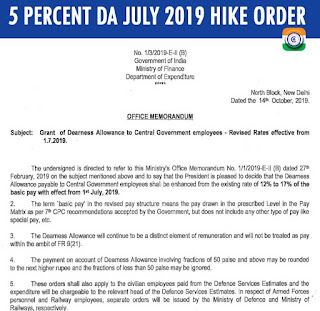One rank one pension scheme Pros and cons
New
Delhi, Feb 5: One Rank One Pension ‘OROP’ implies equal amount of
pension for having served in the same rank and also having rendered the
same length of service.
For an example, a Sepoy who retired in 1995 would get the same amount of pension as the one who retired in 1996.
Pay commission makes thing worse
Discontent among ex-servicemen is largely because of the reason that
with every successive pay commission the gap between past pensioners and
their younger equivalents grows further. According to Lt Gen Raj
Kadyan, who is the chairman of Indian Ex Servicemen Movement, “The stark
difference can be seen after implementation of the Sixth Pay
Commission”. He further says, “for equal service, a Sepoy, who retired
prior to 1996, gets 82% lower pension than a Sepoy who retires after
2006. Similarly, among officers, a pre-1996 Major gets 53% lower pension
than his post 2006 counterpart”.
Problems with OROP
The OROP is not easy as it seems to some. There are several big
hurdles to achieve this ambitious task. When a country has ‘zero’
GDP In a country which has zero GDP growth.
A worker, who wants pension wealth at the age of 60, buys annuity,
needs to pay a fixed amount of money every year into his pension account
that will help him purchase a annuity post retirement. The magnitude of
his annuity must be half his last salary.
Let assume, if the person pays Rs A (for annuity) which eventually
pays him Re 1 per month, post retirement. In such a case his pension at
the time of retirement will be half his final wage, Aw/2; where w is the
person’s wage.
This is how all ordinary pension schemes work. If one wants an
unfunded, or a `defined benefit’ pension, then the taxpayer will have to
pay Aw/2 for each person.
In India today, A is roughly Rs 4000.
In simple words, if a person wants a fixed cash flow of Rs 1 per
month until he/she dies, then the annuity market will charge him/her a
sum of Rs A. This will be the lowest price of an annuity or simple
unindexed nominal annuity.
Real annuities in a ‘zero’ GDP environment
Now suppose, if a person wants an inflation indexed Rs 1 per month
instead of getting nominal Rs 1/month. Then it becomes an inflation
indexed annuity, which will cost a lot higher than A. In order to get
nominal annuity, the provider invests in nominal bonds to produce a
stream of cash.
But in case of an inflation-indexed annuity, the provider will have
to invest in inflation-indexed bonds, which yield a lower stream of
cash. Therefore, a person needs to pay much more than A to get an
inflation indexed stream of Rs 1/month. In such a case the price is B,
and as we know B >> A.
If a government promises an unfunded inflation-indexed annuity, it is placing an expense of Bw/2 on the tax payer.
Problems of GDP growth
In a country with high GDP growth, where per capita growth is say 6%.
In such a country GDP doubles every decade and that is where the
difference emerges.
Suppose a person’s age is 60 but his wage was half of those who are
getting 59-years-old. His pension remains constant when he’s 70 but
those who were 59 have roughly got their wage doubled. In such a
scenario, a pensioner is no match to a worker.
This was not a big deal in Western countries as they have a slow
growth rate but in case of a high GDP the gap becomes a mammoth one.
A person who is at the 90th percentile of the income distribution at
60 years of age will end up at perhaps the 70th percentile of the income
distribution at the age of 70.
Read at : http://www.oneindia.com
Read at : http://www.oneindia.com








Pension scale-Nb Sub with 15years of service is getting the same pension of NbSub who served26 years of service. It is a great injustice. Kindly rectify and do justice to seniors
ReplyDelete